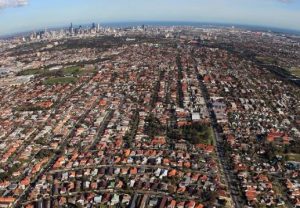Australia increasingly an urban nation – ABS data
Australia is increasingly becoming an urban-dwelling nation with the major cities seeing unprecedented population increases, according to new data from the Australia Bureau of Statistics (ABS).
The number of Australians living in the capital cities increased by 2.5 million, or 17 per cent, between 2011 and 2021, the data shows.
Melbourne had the largest increase with 806,800 new residents, or 19 per cent, and Darwin grew the least with 19,700.
Canberra had the highest growth rate at 23 per cent, Adelaide had the lowest with 11 per cent while regional Australia grew by just 832,000, or 11 per cent.
Sydney grew by 650,800 residents and Brisbane by 421,500. Sydney remains Australia’s largest city with 5,259,764 people but Melbourne is catching up with 4,976,157.
 The ABS data shows the areas with the largest growth between 2011 and 2021 were: Wollert, in Melbourne’s north, up by 24,200 people; and, Mickleham/Yuroke, also in Melbourne’s outer north, up by 22,200. Schofields, in Sydney’s north-west saw an increase of 22,900.
The ABS data shows the areas with the largest growth between 2011 and 2021 were: Wollert, in Melbourne’s north, up by 24,200 people; and, Mickleham/Yuroke, also in Melbourne’s outer north, up by 22,200. Schofields, in Sydney’s north-west saw an increase of 22,900.
The area with the highest growth rate was also Mickleham/ Yuroke, which grew by 1,400 per cent.
The data shows the demographic centre of Victoria is now the suburb of Coburg North, north of Melbourne’s CBD. It has moved 1.2 kilometres south over 2011-21 period, reflecting strong growth in the inner Melbourne suburbs.
The centre of Melbourne is now Malvern, having moved 890 metres west over 2011-21 period, reflecting strong growth in Melbourne’s outer west.
The data shows the areas with the largest and fastest declines were: Mount Isa, in Queensland’s north-west, down by 2,700 people; Ashburton in WA’s north-west, down by 2,400; and, South Australia’s Outback, down by 40 per cent.
But the year 2021 saw Australia’s population growth falter because of the COVID-19 pandemic.
Australia’s population growth slumped to its slowest rate in almost 15 years in 2021 with the nation suffering a net flow of people out of the country as the international border remained closed due to the pandemic.
ABS data showed Australia’s population grew just 0.5 per cent to 25.7 million, with signs the coronavirus pandemic altering the nation’s demographic profile.
And for the first time in almost six years Victoria was not the nation’s fastest growing state or territory.
Historically, more people arrive in Australia than leave and the waves of migrants from numerous countries over time, have had an important effect on the diversity of Australia’s population, the ABS says.
The median age of the overseas-born population has gradually been decreasing from a decade ago however, at 30 June 2020, a small increase was recorded from the previous year, to 44 years of age.
Meanwhile, the median age of the Australian-born population has gradually been increasing over time to now be 34 years of age.
See an interactive map of population change in Australia: Regional Population 2011-21: population change (arcgis.com)
See the full dataset here: Regional population, 2021 | Australian Bureau of Statistics (abs.gov.au)












